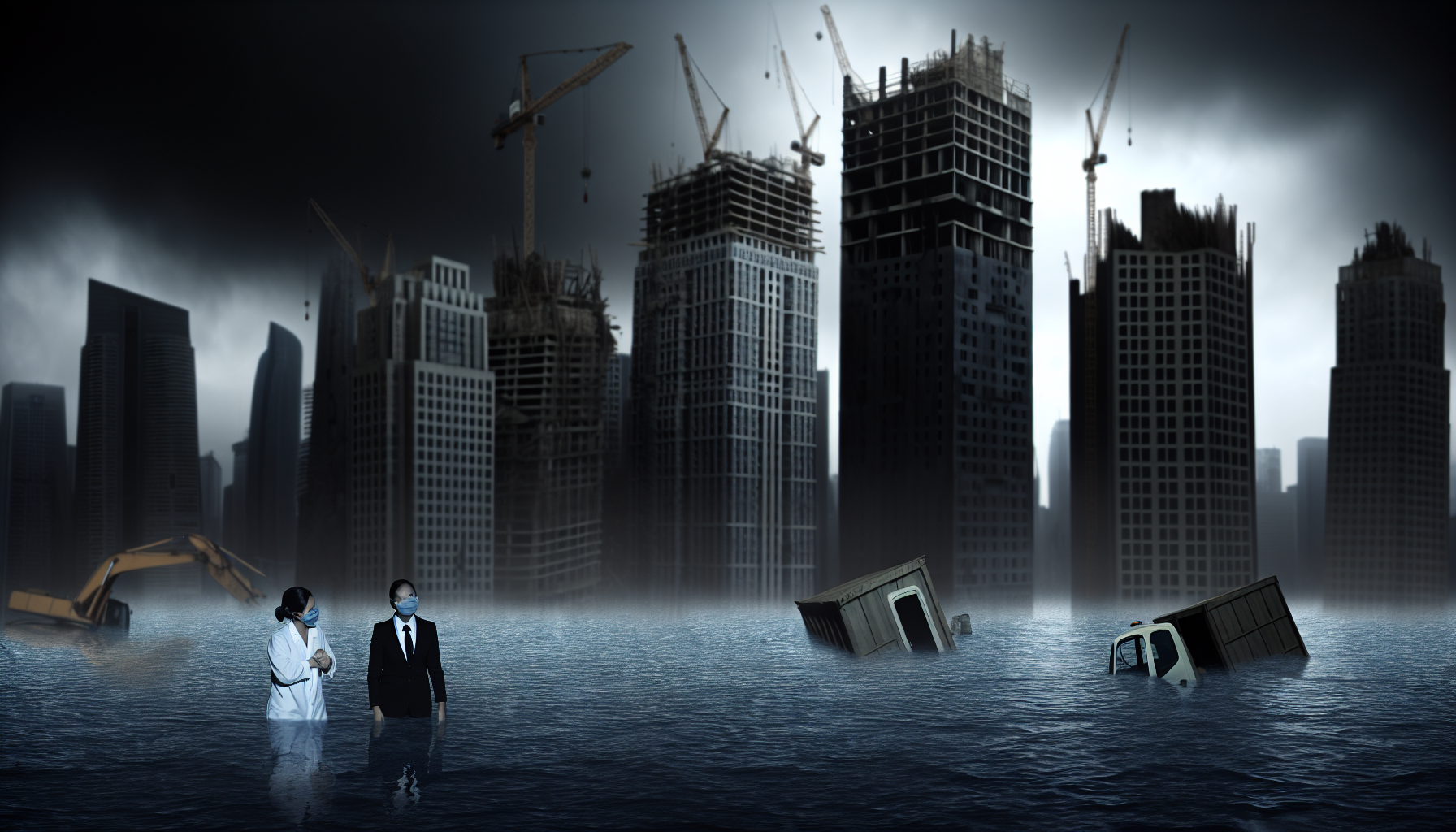In the gloaming of civilization, humanity faces a sea change—literally. The relentless rise of the unforgiving seas swallows avenues and alleyways with the same savorless appetite it has for our once serene shorelines. ‘Twilight of Tides – Will Cities Outlive the Encroaching Seas’ offers a grim vista into the precarious future of our urban strongholds, standing vulnerable on the coastlines. This piece is an extension of our previous exploration, ‘Sinking Skylines – The Earth Claims Back Its Ground’, delving deeper into the aquatic assault on our metropolis monoliths.
As we stand on the precipice of permanence, we gaze across the waterfronts, once bustling with life, now on the brink of becoming brine-infused boneyards. These are not just waves lapping at the foundation stones; these are the heralds of a profound transformation. Let’s not forget, our forecasts remain unchanged, the bitter potion of truth served cold in the last eve’s issue, predicting no slowing in the submersion of skyscraping silhouettes. But do these terrible tides carry with them an eternal night for our cities, or do they hold a glimmer of a twilight punctuated by human resilience?
We recall Atlantis, an exceptional anecdote of urban demise. We have now birthed a multitude of Atlantises, each with its own story of suffocation beneath the cold embrace of Poseidon’s realm. Yet, hope does not dare to tread these waterlogged streets. Our cities are confronted not with mythological wrath but with very real, very rising, and remorseless waters.
But let us muse over the surviving metropolises, the echo of our industrious past. Interviews with the forlorn inhabitants of these drowning urbanites reveal not only a desire to cling to the gasping breaths of their cities but an eerie acceptance of the sodden fate bequeathed to them. Cafes that hosted vibrant discussions now serve their lattes with a side of dampened reality—baristas swapping espresso shots for predictions of when the final floodgate may fall.
Engineers and urban planners, once optimistic pioneers of construction, now turn their expertise to slowing the inevitable demise. Mitigation has replaced expansion in the urban dictionary. ‘There’s a certain futility to it,’ confides one such expert, ‘but to do nothing would be surrender, and humanity doesn’t bow out quietly.’
We have observed the cascading consequences of these encroaching seas, felt the toll in our bones, and now, with a strange mix of despair and enthrallment, we read on, eager for a tale of tomorrow that might yet pivot away from the narrative of doom. But the storylines are not new—reminiscent of the ‘Frozen Tombs’ thawing from their icy seals, uncovering the telltales buried yesteryears. All these, preludes to our current aquatic dirge, serve as both caution and curriculum for those with the temerity to look beyond.
The reality is as stark as it is saltwater soaked: sea walls and barriers have become the quotidian shields against the aquatic invasion, while flood pumps work ceaselessly, like the hearts of these half-submerged giants—grim, indefatigable, yet undeniably finite.
To exist now is to witness the transformation of our cities from the institutions that celebrated human achievement to mausoleums of that hubris. ‘They were mighty once,’ the old-timers mutter, ‘before the waters made toys of our towers.’
As the sun dips below the horizon, one cannot help but wonder—will the night be forever, or will a dawn come when we can rebuild, not on the precarious precipice of beaches, but on the bedrock of lessons learned?
Yet, this is an epilogue not writ in hope, for the stark image has been painted, and perhaps it is not for change that these words serve but for witness—to bear testimony to the epoch’s end. It is, after all, the twilight of tides.
